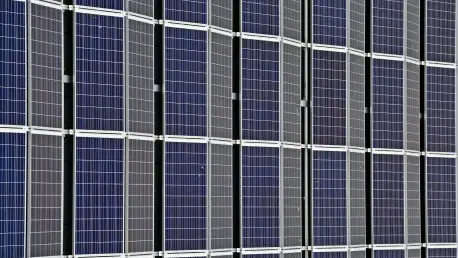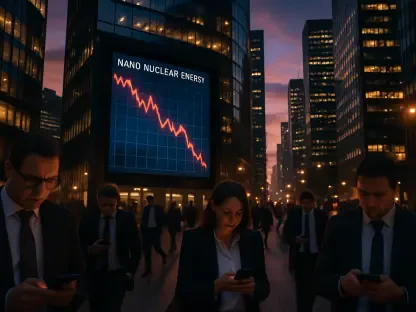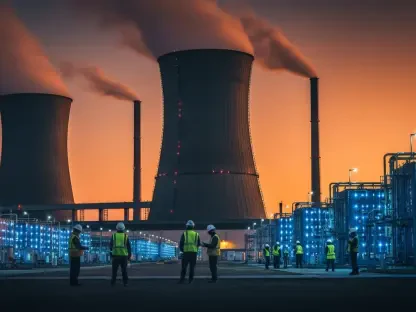Unpacking a Nation’s Energy Transformation Amid Conflict
In the midst of an ongoing civil war and economic collapse, Myanmar stands at a critical juncture where energy scarcity has ignited an unexpected market boom in solar power, providing a lifeline for millions enduring persistent blackouts. With a power grid regressing to levels not seen in a decade, the rapid adoption of solar solutions has emerged as a vital resource for households and businesses alike. This market analysis delves into the forces driving this shift, evaluates current trends in solar energy uptake, and projects future implications for Myanmar’s energy landscape. By examining data, regional dynamics, and economic factors, this exploration aims to provide stakeholders with actionable insights into a market shaped by necessity rather than choice, highlighting the unique intersection of conflict and renewable energy growth.
Diving into Market Trends and Data
The Energy Crisis Fueling Solar Demand
Myanmar’s energy sector is in dire straits, with operating power capacity severely diminished due to political upheaval since the military coup four years ago. The conflict has inflicted significant damage on infrastructure, such as transmission lines, while economic sanctions have curtailed access to essential resources and expertise for grid maintenance. Reports indicate a nearly 50% reduction in generation capacity, a statistic that underscores the gravity of the situation for a population grappling with daily power outages. This collapse has created fertile ground for alternative energy solutions, with solar power stepping in as a viable, immediate response to an otherwise bleak scenario.
Explosive Growth in Solar Adoption Rates
The market for solar energy in Myanmar has witnessed staggering growth, driven by sheer necessity rather than environmental aspirations. Household solar installations have surged, with estimates suggesting a rise from minimal numbers just a few years ago to hundreds of thousands currently in use. A typical setup, costing less than $1,000 including a battery and inverter, offers a cost-effective alternative to diesel generators, which can run upwards of $7,000 plus ongoing fuel expenses. This affordability has democratized access to electricity, empowering even economically strained communities to bypass an unreliable national grid and secure basic power needs.
Dominance of Chinese Solar Imports in the Market
A pivotal factor in this solar boom is the influx of affordable panels from China, Myanmar’s primary supplier. Trade data reveals that imports of solar equipment doubled in the first nine months of the current year, reaching a value of approximately $100 million, marking a significant leap from earlier figures. This trend aligns with patterns observed in other low- and middle-income nations facing similar crises, where Chinese solar products dominate due to their competitive pricing. While this accessibility fuels market expansion, it also introduces potential vulnerabilities, such as dependency on foreign supply chains amid political instability.
Projections and Future Market Dynamics
Shifting Energy Consumption Patterns
Looking ahead, the trajectory of Myanmar’s energy market suggests a profound shift toward decentralized power solutions. The rapid uptake of solar systems is already impacting traditional fuel markets, evidenced by an 11% decline in diesel imports in the early months of this year. As solar technology becomes more efficient and storage solutions advance, projections indicate a further erosion of reliance on fossil fuels, potentially disrupting long-standing utility models. This trend could redefine energy demand forecasts, particularly in conflict zones where conventional infrastructure remains untenable.
Challenges in Scaling a Fragmented Market
Despite the promising growth, significant hurdles loom on the horizon for Myanmar’s solar market. The absence of regulatory frameworks to integrate decentralized solar systems into a cohesive grid poses risks to long-term stability. Ongoing conflict further complicates efforts to establish standardized policies or attract investment for larger-scale renewable projects. Market analysts anticipate that without strategic interventions, the current patchwork of individual solar setups may struggle to support broader economic recovery or industrial needs, limiting the sector’s transformative potential.
Opportunities for Innovation and Investment
On the flip side, this crisis-driven market presents unique opportunities for innovation and investment. The demand for affordable, resilient energy solutions opens doors for technological advancements in solar efficiency and localized manufacturing. International stakeholders could play a crucial role by facilitating technology transfers or funding community-based solar initiatives. If harnessed effectively, these opportunities could position Myanmar as a case study in necessity-driven renewable energy markets, offering lessons for other regions facing similar challenges.
Reflecting on Strategic Pathways Forward
This analysis of Myanmar’s solar energy market reveals a remarkable adaptation to extraordinary circumstances, where conflict and economic hardship have spurred a grassroots renewable energy surge. The data paints a picture of rapid adoption fueled by affordable imports and dire need, while projections point to both transformative potential and significant obstacles. For stakeholders, the path forward involves investing in scalable, decentralized solutions that prioritize accessibility and resilience. Businesses and policymakers are encouraged to explore cooperative models for resource sharing, while international support in easing supply chain barriers proves vital. These strategic considerations aim to turn a crisis response into a sustainable foundation for Myanmar’s energy future, offering a blueprint for navigating similar markets shaped by adversity.









